Tags
"art"
Learning How To Learn: Northwest Woodworking Studio, Jacob Hayman, Winter Shadow 2016

Even though I wasn’t sure what to expect, I had been looking forward to my shadow at the Northwest Woodworking Studio all winter break. I did some research on the studio, and found some YouTube videos of Gary Rogowski, the Reedie English major turned expert woodworker who was to guide me and Emily (a fellow Reed student and new friend) for the week. I soon realized I wouldn’t learn much about woodworking on the internet.
Entering the studio didn’t change my feelings of total ignorance. Emily and I talked with Gary briefly about his nonlinear path to becoming a premier woodworker and teacher, and we quickly got started making dovetail joints. Gary gave a demonstration and explained the mechanics of the tools first, but he didn’t want us to learn by listening. We had saws and chisels in our hands within minutes of first entering the studio. We hit the ground running, and the week didn’t slow down.
After going to Gary’s house and grabbing some lumber, Emily and I were assigned to construct a door for the studio office. Gary gave us an idea of what he wanted, but he left us to figure it out for the most part. We measured, cut the particleboard, made mistakes, and measured more. We had to frequently ask for help and guidance, but we eventually got it installed. It wasn’t the most attractive door, but it was a fun project and (hopefully) Gary won’t have to replace it any time soon.
Continue reading Learning How To Learn: Northwest Woodworking Studio, Jacob Hayman, Winter Shadow 2016
Hail Gary, Free of Briefcase: Northwest Woodworking Studio, Emily Zetkulic, Winter Shadow 2016
On the first day, he had us build a door. I had no idea what I was doing.
I don't mean that I was unsure of how to build a door; I unquestionably did not possess that knowledge. I mean I really didn't know what I was doing—that I was building a door, that this door would be the entrance to Gary's office indefinitely, that I would not sever a fingertip in the process. (Don't worry, Gary Rogowski '72 had us sign waivers.) But at the end of the day, after several hours of foggy instruction following, Jacob and I did have a door in front of us (and lo, one that barely creaked, certainly opened, and practically closed), and twenty fingers between us.
Over the next few days Jacob and I would build more wooden things, culminating in the execution of a real live chair prototype. We designed and chiseled and sawed and swept. We went out to lunch with the Master Woodworking students at a Cuban restaurant in Northeast. We were privy to the same assignments the Master students received, if not the same skill set.
Continue reading Hail Gary, Free of Briefcase: Northwest Woodworking Studio, Emily Zetkulic, Winter Shadow 2016
Graphic Design with Ecova Inc: Oscar Guerrero, Winter Shadow 2016
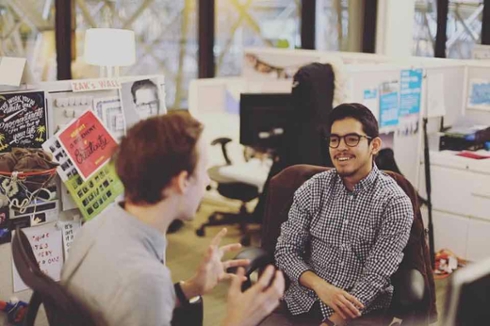
Graphic Design is something that is relatively very new to me. I officially started doing graphic design when I worked as a graphic design intern at the Center for Life Beyond Reed last summer, but I was untrained and it was very touch-and-go. I quickly discovered that I had a knack for it, and that design came naturally for me, and I worked myself really hard to be as proficient as possible. I watched YouTube videos, looked at other designers’ work, and did my own research to refine my skills. I realized I had a lot of potential, which excited me because I feel graphic design could open up a career path I had never really considered. Being a studio art major, I always had this fear in the back of my mind that I would graduate with a BA in fine arts and then would never be able to make a sustainable living just doing art. Graphic design, however, is a marketable career path that I feel extremely passionate about.
Skip forward to my Winter Shadow. I got to shadow Shawn Ingersoll and his fellow design team at Ecova Inc. Ecova is a not a household name, but it absolutely should be. The Ecova team is hired by other companies and utilities, to eliminate all forms of inefficiency in the practices of those other companies. Ecova swoops in, looks at all the company’s bills, their history, literally everything, and says, “okay, you’re bleeding money here, here, here and here, so if you want to optimize your profits, you have to make these changes.” It’s a great company, especially because it’s really environmentally friendly and focused on sustainability.
I started my Shadow on Monday, January 11th in downtown PDX. It was only a convenient half hour bus ride away. I started my day by meeting the graphic design team composed of Shawn Ingersoll (my sponsor), Kelly Saunders, and the Marketing Team (two of the teams’ members were absent that first day), to talk about current and future projects and initiatives. The teams also spent a great deal of time discussing the weekend and catching up with each other. It was great, because I got some insight into how both teams work together, and also got to see what a friendly and motivated community they are a part of. Once the meeting was over, I had a one on one meeting with Shawn, who gave me his personal history and experience with graphic design, which was really valuable.
Continue reading Graphic Design with Ecova Inc: Oscar Guerrero, Winter Shadow 2016
East Bay Center for the Performing Arts: Isabel Lyndon, Winter Shadow 2016
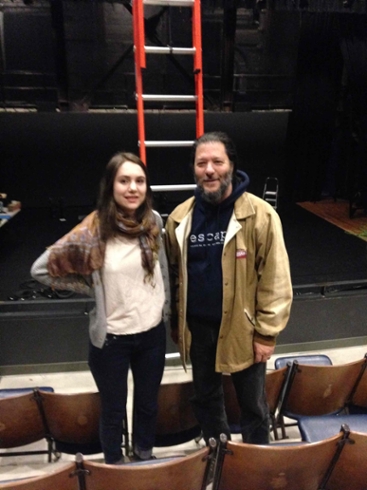
This winter, I spent four days at the East Bay Center for the Performing Arts in Richmond, California. I shadowed Jordan Simmons (Reed ’78), but I also had opportunities to work independently, with other interns, and with various members of the faculty and staff.
The Center, which includes a theater, a dance studio, practice and rehearsal rooms, and office spaces, is housed in a beautiful renovated building. When I arrived, Ruthie, the Deputy Director of Programs, took me around the Center, introducing me to everyone we ran into. She told me what they did at the center, professionally, but she also alerted me to other details, such as: one employee made great cheesecake and another was passionate about sneakers. Everyone had an amazing set of combined skills or passions. Ruthie herself, I learned, had degrees in both social work and jazz piano, and this kind of combination was not unusual among the staff.
Founded in 1968, the Center offers on-site classes, in school and after school programs for students in the Richmond area, ensembles, performances, college and career counseling, and internships. When I visited, the Center was in a “dark week,” or a period with private lessons and rehearsals but no regular classes. Even so, sometimes I would walk downstairs and come upon a student in a piano lesson. One afternoon, the sounds of an alumni band floated up from a first floor rehearsal room to the offices upstairs. Usually, the Center offers lessons in everything from violin to West African Dance, acting to oboe, plus jazz theory, capoeira, Mien/Laotian ceremonial dance, stage combat, ballet, and more.
Living in Clay Time In Clay Town: Kammy Chiu, Winter Fellowship for International Travel
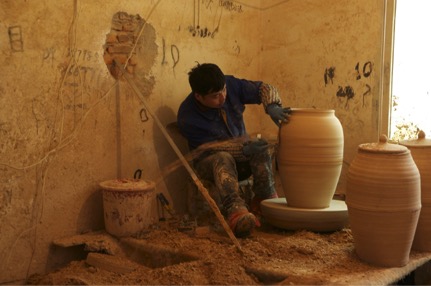
Kammy Chiu, sophomore Economics-ENV major and recipient of the Winter Fellowship for International Travel, reflects on her residency program with The Pottery Workshop in Jingdezhen, China, learning to work with porcelain.
The Pottery Workshop
My artistic residency with The Pottery Workshop (TPW) took place in The Sculpture Factory (TSF), Jingdezhen. For just over three weeks, I thought about absolutely nothing apart from clay. Three other international residents accompanied me during my time at TPW: Edith, an Israeli artist who specializes in painting porcelain tiles, Alberto, arguably one of the most knowledgeable mold-makers in the US who’s about to finish his MFA at Syracuse University, and Josh, another Reedie who introduced me to ceramics a year and a half ago.
Continue reading Living in Clay Time In Clay Town: Kammy Chiu, Winter Fellowship for International Travel
Learning to Let Go: A Ceramics Residency at The Pottery Workshop in Jingdezhen, China: Josh Tsang, Winter Fellowship for International Travel
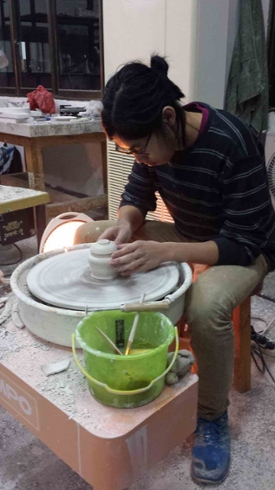
Josh Tsang, sophomore chemistry major and recipient of the Winter Fellowship for International Travel, reflects on his time in Jingdezhen, China, completing an artistic residency in Chinese ceramics.
Despite being safely at home in Portland, and having almost no school or work obligations, I still feel as if I am at the mercy of the external world. I have just completed an artistic residency at ‘The Pottery Workshop’ in Jingdezhen, China – a ‘small’ (for China) town known as the birthplace and capital of porcelain – and I have never felt so inexperienced in ceramics (not even when I first started making pottery 7 years ago). This isn’t because I haven’t learned anything or made progress in my work, but because everything I knew about how art and pottery works in North America was thrown on its head in Jingdezhen. That’s why I’ve titled this post “Learning to Let Go” because literally everything I knew, from producing work – the throwing, glazing, firing processes – to the conceptual idea of ceramic art was thrown out the window. I was starting from scratch.
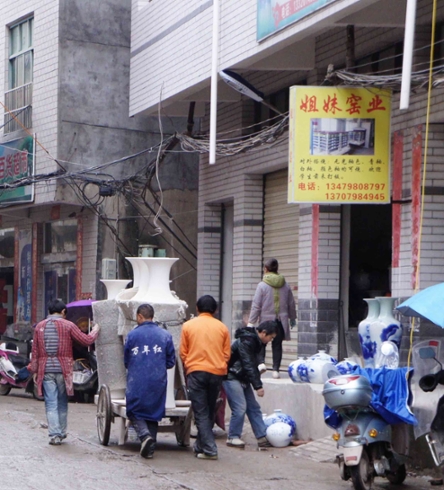
Continue reading Learning to Let Go: A Ceramics Residency at The Pottery Workshop in Jingdezhen, China: Josh Tsang, Winter Fellowship for International Travel
Presidents Summer Fellowship 2015, Impressions from Saint Petersburg Part 3, Orla O'Sullivan
Orla O'Sullivan '16, Russian major, is diving deep into the extensive collections at the State Hermitage Museum in Saint Petersburg, Russia, conducting research on visual culture and responses to controversial exhibitions for her President's Summer Fellowship.
The three months since returning from Russia have been a blur of starting my thesis, and running between classes, and intermittently, reflecting upon my trip. I feel inexplicably grateful for receiving the opportunity to intern at the Hermitage, study classical and contemporary Russian art, and learn how to articulate critical analyses using idiomatic Russian. I, moreover, feel so grateful for this opportunity to continually stretch my ability to move through and be comfortable in new situations, geographically, interpersonally, and linguistically. Thank you.
As my two prior posts express, I was, and continue to be, particularly interested to study Russian visual culture, civil society, and their influences. My project, which was founded upon three tiers of museum internship, art historical research, and language study aimed to examine these three aspects within a Russian cultural context, because the field is difficult to study and access in the U.S.
Continue reading Presidents Summer Fellowship 2015, Impressions from Saint Petersburg Part 3, Orla O'Sullivan
Presidents Summer Fellowship, Connecting to Armenian Artists Part 3, Knar Hovakimyan
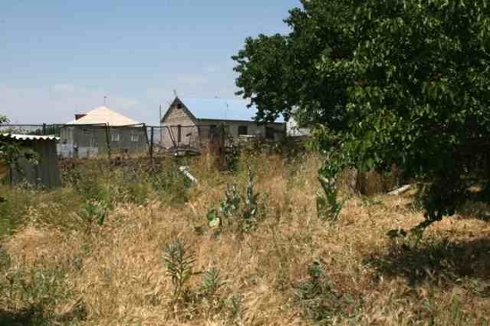
Let's talk translation.
I was really surprised to find that the most difficult part of the translation process was reading the poems. This task seemed easiest at first, but when I actually set out to produce a literal translation of a poem, I found myself completely lost. For a while I thought that my Armenian language skills were just not up to par, but I soon realized that the difficulty was not in understanding the meaning of the words, but uncovering their role within the line and within the whole poem. I had to think deeply about what the author of the poem intended with each word since soon I would become the author of the translation, and ideally I would have the same intentions. So the first step was deep reading and analysis to produce a literal translation.
Continue reading Presidents Summer Fellowship, Connecting to Armenian Artists Part 3, Knar Hovakimyan
Presidents Summer Fellowship, Art Therapy in Italy Part 3, Margaret MacLean
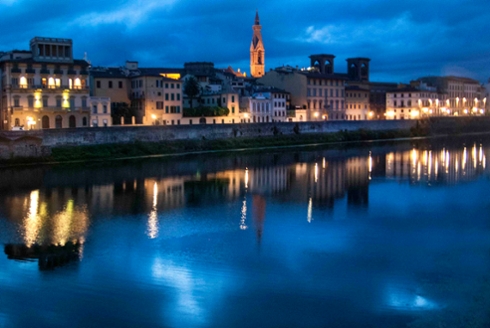
President's Summer Fellow Margaret MacLean '16, studio art major, is leading art classes for youth with intellectual and developmental challenges at the Cooperativa Barberi in Florence, Italy. Read on for the third installment of her adventures:
It is so strange to be back in Portland away from the hustle and bustle of Florence. I realize that I felt very big in Florence in a wide-clunky-taking-up-space sort of way. Biking to work or class I was constantly dodging tourists, locals, and dogs on narrow streets. Coffee is served in the smallest of cups. Kitchen appliances are tiny. Doorways are smaller than in the US, chairs and tables are lower, and there is always a stranger’s elbow to accidentally bump into. Being back in Portland I feel like I have space to breathe, but I still miss the chaos.
Presidents Summer Fellowship 2015 - Orla O'Sullivan - Part 2
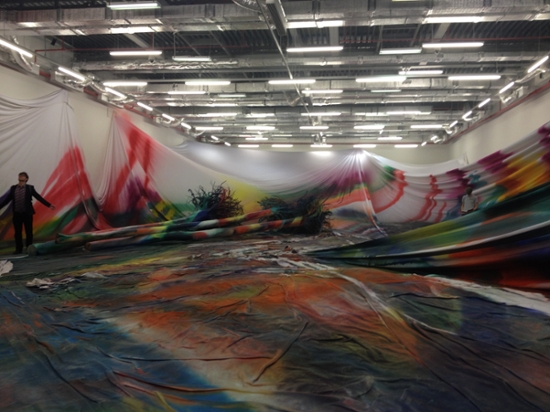
yes no why later by Katharina Grosse, Garage Museum of Contemporary Art, Moscow
Orla O'Sullivan '16, Russian major, is diving deep into the extensive collections at the State Hermitage Museum in Saint Petersburg, Russia, conducting research on visual culture and responses to controversial exhibitions for her President's Summer Fellowship.
I’ve held off on my second post, because I’ve been struggling with the realization that my project, which had originally aimed to document others’ responses to contemporary art at the Hermitage, has had to take a different track, one which has been both more personally difficult and fulfilling than I had expected.
A few weeks into my internship, I realized that implementing my project per the original plan without going completely rogue was going to be nevozmozhno, impossible. What previously seemed like a fast-paced, ever-changing series of projects revealed itself as a series of events that should have been planned months ago, but were instead hastily assembled four days prior to their official presentation date. We could complain of a lack of helpers, but that would be inverting the truth. There’s no lack of helpers (the museum pumps out visas for students from impressive European universities like clockwork); there’s just no available record of them. So when some of the more determined volunteers do make an attempt to draft a project schedule or add a little logistical infrastructure, they usually become completely overwhelmed with the scale of their endeavor, the difficulty of contacting people, and the list of unfinished projects barreling toward their deadlines.
Continue reading Presidents Summer Fellowship 2015 - Orla O'Sullivan - Part 2
Presidents Summer Fellowship - Art in Italy - Margaret MacLean - Part 2
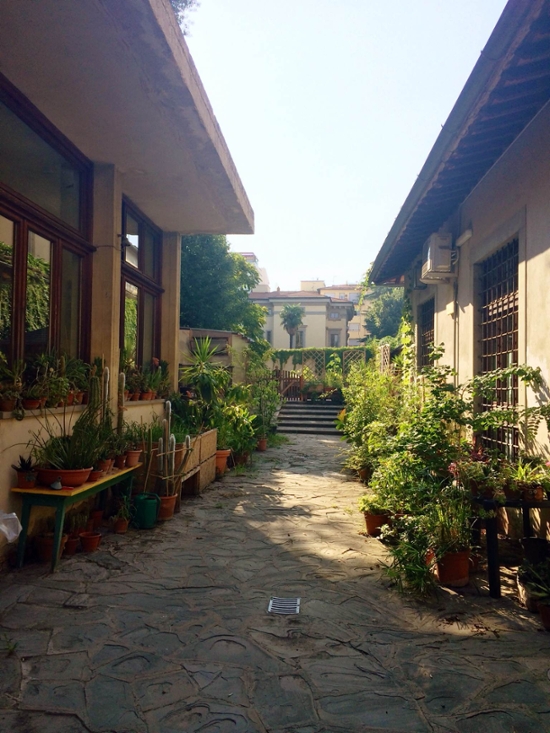
The beautiful Cooperativa Barberi.
President's Summer Fellow Margaret MacLean '16, studio art major, is leading art classes for youth with intellectual and developmental challenges at the Cooperativa Barberi in Florence, Italy. Read on for her adventures:
The hardest part of my PSF experience so far has been wrestling with my expectations. The dreaming and planning I did to prepare for Italy was incredibly important but also left me with some lofty ideas about what my summer would look like. My views on all of the things I came here for have shifted. My project has taken a slightly new shape and is far less sparkly and neat than it was in my imagination. I suppose this is to be expected!
First of all, my relationship towards my photography has changed. Usually I feel like my camera gives me the power to enter into spaces and situations that I couldn’t ordinarily. As photographer Diane Arbus said, “the camera is a kind of a license” that allows you to ask more questions and look more carefully than is usually socially acceptable. But in Florence during peak tourist season, with a camera in hand I feel like a tourist, not an artist. When I click the shutter button I feel like I am a part of a tourist culture that takes-takes-takes and gives nothing back. Italy’s biggest industry is tourism and in Florence so many things are constructed purely for tourists to experience and photograph. I don’t know if what I am feeling is genuinely a dislike for this exploitative aspect of photography or simply a form of artistic self-consciousness. Probably a bit of both.
Presidents Summer Fellowship, Art in Italy, Margaret MacLean
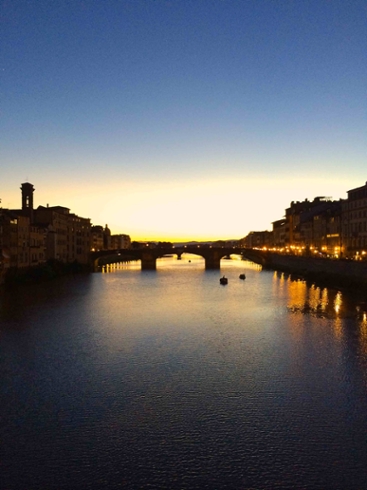
President's Summer Fellow Margaret MacLean, '16, studio art major, is leading art classes for youth with intellectual and developmental challenges at the Cooperativa Barberi in Florence, Italy. Read on for her adventures:
Today I ran down an “up” escalator with my stomach full of mozzarella and espresso. Honestly, this is a pretty good metaphor for how the last month and a half has been for me in Italy: exhilarating, frustrating, accompanied by plenty of moving backwards, and success only after a big leap of faith. And always after eating a little more than I thought I could!
The weather in Florence is almost unbearably hot and humid but I am getting used to it. I spend my mornings in Italian class and my afternoons volunteering in art therapy or exploring the city. I drink at least two espresso a day, speak only Italian at home, and I am slowly cooking my way through a Tuscan cookbook. I work in the garden with my host nonna (grandmother). I practice my landscape sketching on the banks of the Arno and in various piazze (plazas) around the city. When I get homesick and/or overheated I watch American movies dubbed in Italian at the foreign movie theatre. I am loving my volunteer work, my students, and the new friends I have made here.
Continue reading Presidents Summer Fellowship, Art in Italy, Margaret MacLean
Youth Organizations Umbrella, McGill Lawrence Internship Award, Olivia Kilgore
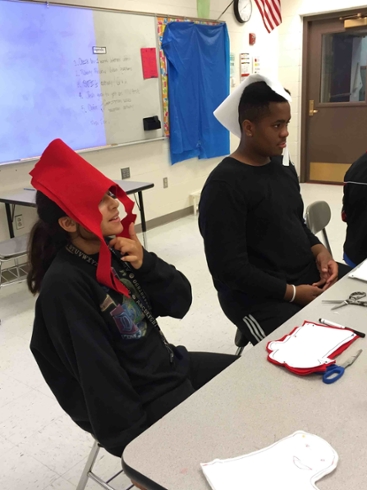
Recipient of the McGill Lawrence Internship Award, Olivia Kilgore '16, is teaching cultural connections and slam poetry to classes to Middle School Youth in Evanston, Illinois.
Youth Organizations Umbrella is a youth development non-profit organization that serves youth in Evanston, a suburb of Chicago. This summer, I have the privilege of facilitating classes for an eight-week summer program to middle school students in Evanston. As a staff member of Y.O.U., I promote positive youth development. The strategy encompasses the idea that empowering youth through supporting their voices and ideas enables them to resist negative factors and be successful in all areas of their lives.
The summer program incorporates seven main elements: life skills (civic leadership & cultural connections, health & nutrition, healthy relationships & sexual health), electives (arts/drama/lit, sports & fitness, STEM), structured play & team building activities, field trips, supportive adult relationships, family engagement and mental health counseling/crisis intervention.
Presidents Summer Fellowship, Connecting to Armenian Artists, Knar Hovakimyan
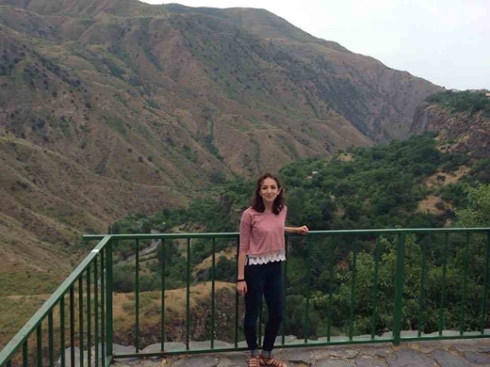
Working on the ground in Armenia, President’s Summer Fellow Knar Hovakimyan ’16, linguistics major, seeks to introduce Armenian literature to English-speaking communities through poetry translation
I spent a month at home panicking over how I would get in touch with poets, adjust to their schedules, and meet them each a couple times in Armenia. When I got to Armenia, I quickly realized that I was going about things the American way – here, it is not necessary to make plans weeks in advance, confirm, reschedule... You can just show up at someone's house and they'll have a table set in five minutes. My first day here I made a phone call to a poet, Tigran Paskevichyan; after introductions we arranged to meet later that same day at Artbridge, a cafe he frequents. The entire encounter felt like a scene from a movie. The waiter brought out the poet's usual Armenian coffee, which Paskevichyan enjoyed with a cigarette as we talked about my project; we discussed his influences ranging from Daniil Kharms to Saul Leiter and his intentions behind specific poems – before I left home, I was worried about how far my Armenian language skills would take me, but luckily, I managed to keep up the conversation. With a signed copy of his book in hand and some new poems to work on, I embarked on the hectic week ahead of me.

Presidents Summer Fellowship 2015, Orla O'Sullivan, Impressions from Saint Petersburg
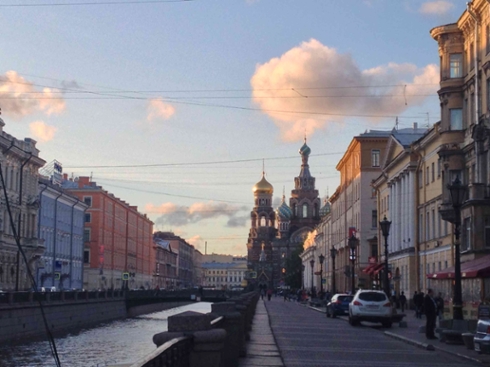
Orla O'Sullivan, '16 Russian major, is diving deep into the extensive collections at the State Hermitage Museum in Saint Petersburg, Russia, conducting research on visual culture and responses to controversial exhibitions for her President's Summer Fellowship.
I was shocked to learn recently that pieces frequently go missing at the Hermitage Museum, which probably surprises no Russian person, but it did surprise me. No one is, as far as I can tell, fired (either the theft is hard to trace, or not much effort to trace it is exerted). There is media buzz for a few weeks and then that’s the end of it. I am as equally mesmerized by the Winter Palaces’ halls and the General Staff Building’s sheer scale, as I am amazed that this institution functions as well as it does. The archeological department on the fourth floor, for instance, is filled – and this is no hyperbolical statement – with at least thirty years of books. At least. There are books and quills and pens and more books and articles and stray papers and presentations and various Russian shtukis (“thingies”) all piled on the tables and floors – just everywhere. So it shouldn’t be any wonder that items go missing, although, the museum boasts both antiquated and cutting-edge conservation facilities.
On my first day interning, I spent 2 hours (literally) trying to find the door, and then, once I found it, was asked, would I please assist a three-day conference on virtual archeology, where I met some fascinating people, including an archeaometrist (someone who applies physics to archeology), an architect specializing in computer program semantics, and the archeology department director (who happens to be the cousin of the museum director). Since then, it has been a whirlwind: Attending an international congress on Peter the Great; planning a museum celebration of the European Union; labeling Old Russian rock fragments with quills and ink; translating documents from Russian into English; and, most recently, working on a presentation for an exhibition closing ceremony on Monday. There is no written or printed schedule – everything just seems to happen on a whim – and practically each day brings a new, completely unforeseen, project.
Continue reading Presidents Summer Fellowship 2015, Orla O'Sullivan, Impressions from Saint Petersburg
Union Pacific Railroad Museum, Reed Winter Externship Program, Liana Clark
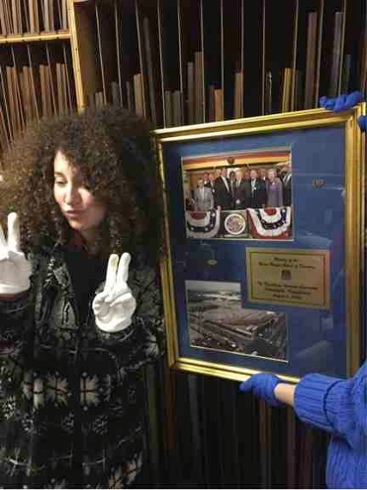
Text reads “Meeting of Union Pacific Board of Directors, The Republican National Convention, Philadelphia, Pennsylvania, August 3rd, 2000”
Liana Clark, senior art major, joined the team of the Union Pacific Railroad Museum in Iowa as a part of the Reed College Winter Externship Program.
On several occasions my mother has told me that I'm "the best person to go to a museum with." I'm sure others would disagree - not that they would be noting a different trend than she did. For as long as I can remember, I've been extremely critical of the wall text, the arrangement of art objects or artifacts, or whatever general narratives the gallery space is attempting to project with their exhibitions. This tendency to critique only intensified after I declared myself as an art major at Reed. Still, I never seriously considered working in a museum. For me, the fun of rolling my eyes at a reductionist perspective on an artist's legacy, or quoting Fred Wilson ("museums are great silencers of dissent") after reading an exposé that seemed to stretch the truth, was my own little exercise in futile expression of exacerbation. I didn't expect it to go anywhere.
One night, my housemate and I were trying to figure out what we should do over winter break. We decided it would probably be worthwhile to apply for Reed's winter externship program, but since the form only lets applicants select a single location (and we didn't feel especially competitive), we laughingly chose the most intriguing - but hopefully least enticing to our peers - destinations. Seeing as the Union Pacific Railroad Museum is not only a corporate museum (bound to offend the average Reedie's anti-establishment sensibilities), but it is also in Council Bluffs, Iowa (which in the middle of winter, didn't exactly call for the same uniform as the beach in Miami), it seemed like I'd have a good shot. I figured this could be my chance to see what it was really like to work for a museum. Besides, at the very least, it would definitely supply me with great material for the next time I wanted to complain about what was badly executed about a glass case of silverware in the Legion of Honor.
Recreational Therapy at the Livermore Veteran’s Association, Reed Winter Externship Program, Maggie Maclean

As a part of the Reed Winter Externship Program, Maggie Maclean, class of 2016, worked at a veteran’s hospital, assisting patients through recreational and art therapy
As I prepared for my internship at a teaching hospital in Livermore, California, I realized that there was one very important detail that Reed had not prepared me for: business casual attire. I managed to dig out of my closet one pair of pants without ripped knees and a pair of boots without paint splattered on them. I arrived at the Veterans Association’s Community Living Center hoping to blend in as a med student, not an art major.
Although I have taken a few psychology classes at Reed, I never imagined myself in the scientific world of clinical medicine. I was worried about how I would fare in a hospital setting. Taking the elevator between floors of residents’ rooms I felt like an extra in a doctor show minus the white coat. But throughout my externship I saw how far interpersonal skills, patience, and an open mind could take me.
Continue reading Recreational Therapy at the Livermore Veteran’s Association, Reed Winter Externship Program, Maggie Maclean
Seattle ReCreative, Reed Winter Externship, Sage Freeburg
Sage Freeburg, junior English major, participated in the Reed winter externship program, working with Seattle ReCreative, a reuse and art center dedicated to reducing landfill waste.
On a dreary Monday morning, I hesitantly drove through Seattle traffic, guided by the oh-so-comforting voice of Siri directing me to “take a left onto Greenwood Avenue.” I did. “The destination is on your left, 8408 Greenwood Avenue. North.” I looked left. Nestled between an empty storefront and an eccentric looking shop with space shuttle stickers plastered to the window, was the home of Seattle ReCreative. My initial introduction to the store and program was delayed, as the windows were covered with curtains, so I was unaware of what great feat lay before me. It was the opening of the door that was my first look into the program, which reveled boxes, and boxes, and boxes of yarn, glitter, paint, nails, and the smiling face of co-founder Emily Korson.
Emily explained to me that they had just moved into the storefront, and were planning to open for a preview weekend that Saturday. “That means” she said “that we need to unpack and organize everything by Friday.” I must have looked a little intimidated because she gave me an understanding nod and said “Yes, I don’t know how we’ll ever be able to unpack everything by then.” To give a visual, it was almost impossible to walk from one end of the store to the other without pushing a box out of the way, or stepping over a pile of ceramic tiles. I honestly didn’t think it could be ready in just five days.
Continue reading Seattle ReCreative, Reed Winter Externship, Sage Freeburg
Art and Seoul: Kaori Freda, Winter Fellowship for International Travel
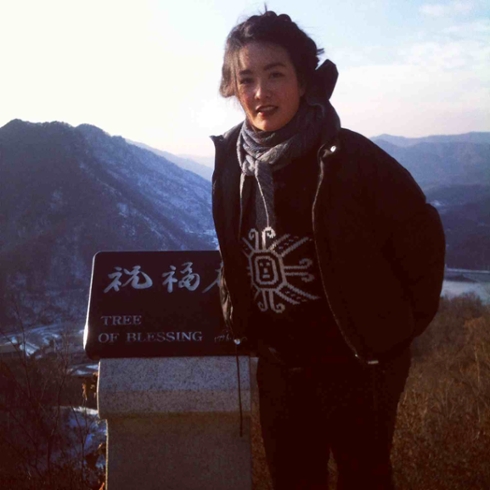
I am a senior art major who had the pleasure of traveling to Seoul during winter 2014 under the auspices of the Presidents Winter International Travel Fellowship. There, I stayed at the Unification Church Cheongpyeong holy grounds for a week taking photographs, making rubbings, and conducting on-site research. I’m intrigued by the ways in which this specific site of pilgrimage manipulates the movements of the body and mind and offers church members a tantalizing promise of eternal spiritual salvation. The Unification Church, also known as the Family Federation for World Peace and Unification, is the church of an international Christian religion. Founded in South Korea in 1954 by Reverend Sun Myung Moon, the church seeks to establish a Kingdom of Heaven on Earth. The church been criticized for its cultish practices, which include mass arranged marriages. The Unification Church directs its churchgoers to Cheongpyeong, located in Seoul. Although I am an avid nonbeliever, Moon arranged my parent’s marriage and I have unwillingly gone to Cheongpyeong multiple times in my childhood. This project sought a departure from my past with the religion by willfully confronting my memories on-site and creating artwork in order to move forward and grow both as a person and an artist.
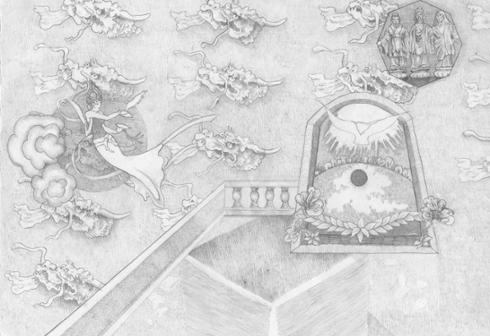
At Cheongpyeong, frigid weather gave hazy form to my breath as I exhaled. Each morning I bundled up before trekking up the Church’s holy mountain, making rubbings along the way. This mountain plays a crucial role as a site of pilgrimage and a harbinger of hope for what the church members conceive as their salvation and pathway to paradise. As they climb the mountain at daybreak during their religious training, the churchgoers pay their respects to holy trees and water imbued with spiritual energy. There is even a place called “Holy Water” where water bubbles and streams from the rocks for church members to quench their thirst as they trek up to the mountain top, not unlike the story of Moses striking the rocks and calling forth water in Numbers 20 in the Bible. Given that the foundation of Unificationism derives from a mishmash of religions including Christianity, I really wouldn’t be surprised if this reference to the Bible stood at the forefront of Moon’s mind as he constructed space and ritual at Cheongpyeong. These religious nodes would blend easily into the surrounding landscape if not for the fact that they are circumcised by a stone ring and marked with stone tablets incised with titles like “Tree of Blessing,” or “Tree of Life” in flowing calligraphic script. Church members believe that their holy ancestors and the spirits of the mountain flutter between the branches of these trees, gazing benevolently down at those who pray with devotion. In addition to these daily pilgrimages, they are confined within a strict itinerary in hopes of purifying their ancestors and exorcising evil spirits from their bodies. Although the strength of their piety is admirable, I’m dubious as to the amount of truth in such claims, especially given that Moon (who dubbed himself the Messiah) and his “Holy” family practiced corruption, domestic violence, amongst other sins. The leaders of the church certainly do not practice the values they preach. This untrustworthiness fractures their constructed divinity and places doubt onto the purity of the religious practices to which their followers adhere.
Old Thimi, Nepal, Potters of the Prajapati Community
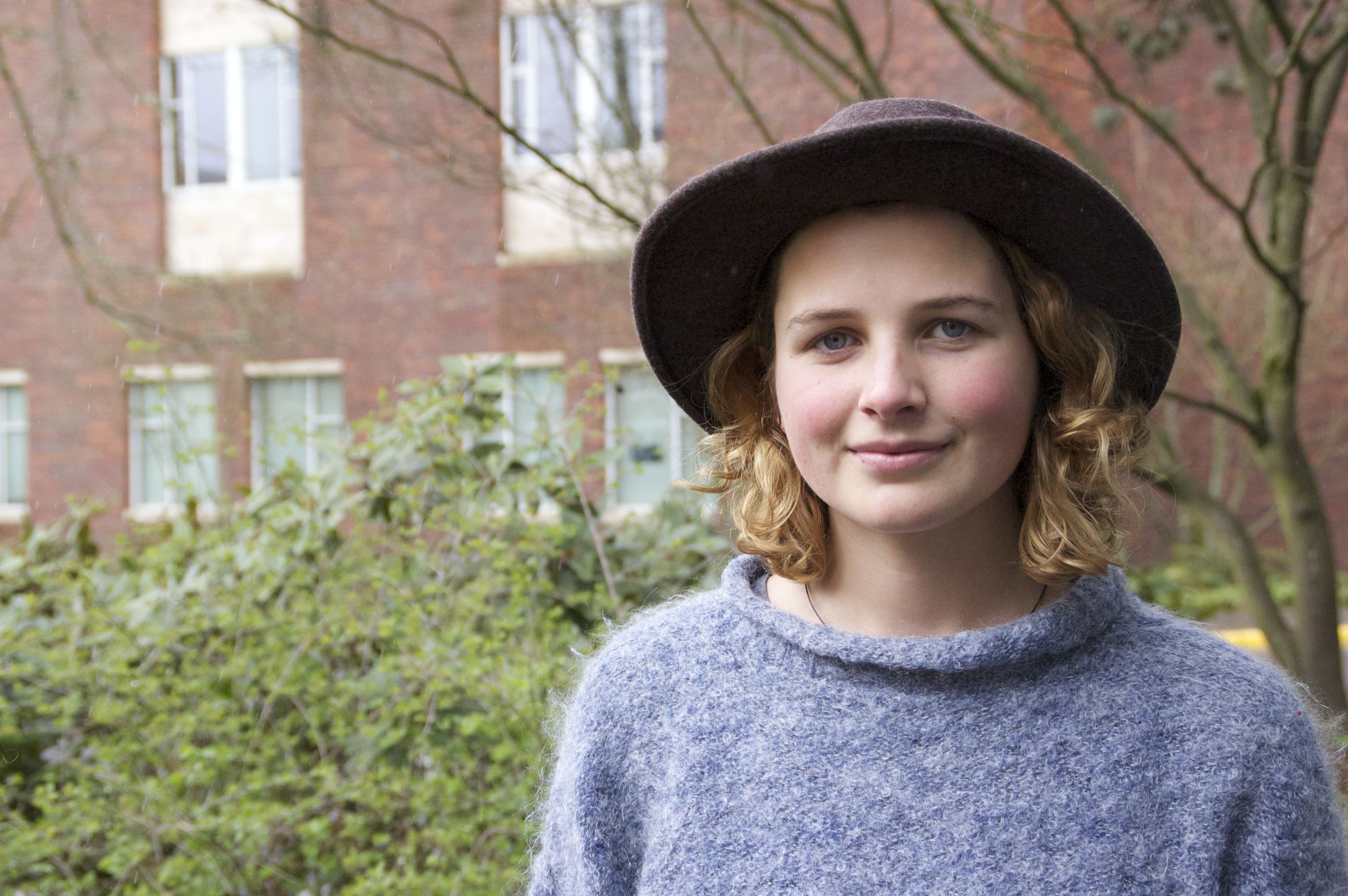
The streets of Old Thimi hum with the sounds of spinning wheels and the shuffling of terracotta, and there is a distinct scent of ash and mud. The just-thrown planter pots, whose silver bodies mingle with sleeping dogs in the sun, dry in alleys seemingly indifferent to the motorcyclists who carefully dodge by. There is always a bustle of activity in these streets and courtyards, and more often than not it surrounds some process related to pottery. Stacks of pots, dry, wet, or fired, line the streets. Piles of hay and ash wait in courtyards to be sacrificed for the transformation of wet clay into terracotta. Massive chipped water jars sit in dusty corners, bearing witness to their own extinction. In the past 50 years the ceramics industry in Kathmandu Valley has undergone significant change. What was once a booming market demanding a diversity of clay products has since significantly dwindled. Today, one finds few potters making anything besides planter pots, rice beer distillers, and popcorn bowls, which betray Thimi’s reputation as home to the craftsmen who throw the largest pots in all of Nepal.
Continue reading Old Thimi, Nepal, Potters of the Prajapati Community
